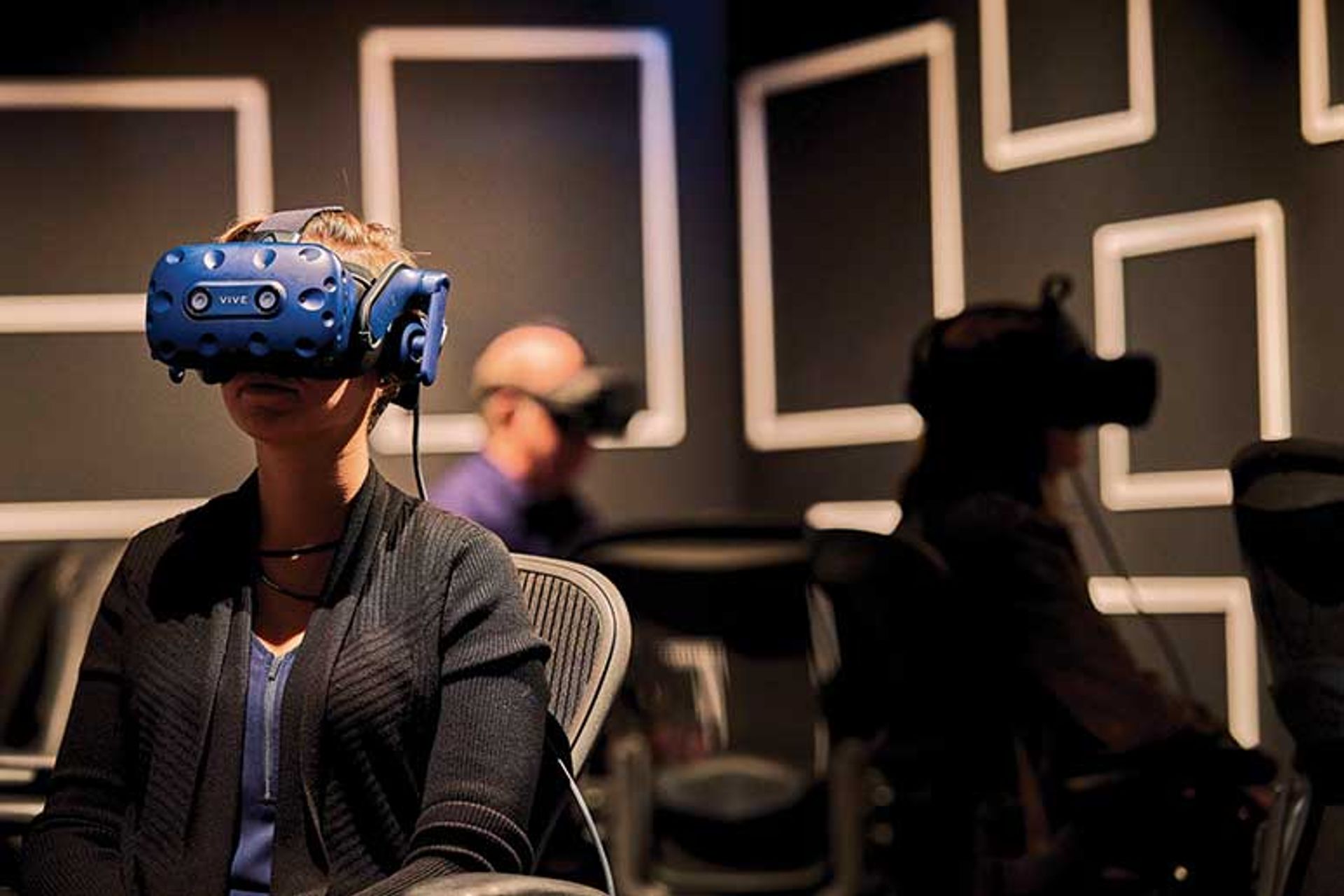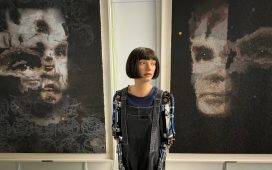Like most museums, the Illinois Holocaust Museum and Education Center’s (IHMEC) extensive collection is grounded by important historic artefacts. Central to its space in suburban Chicago is a Nazi-era rail car visible from every floor in the museum. Its battered cargo hold can be entered for quiet contemplation or, at the wishes of the survivors, avoided entirely. But the museum’s most important asset is also its most vulnerable—a dwindling but determined community of Holocaust survivors.
To protect and preserve their crucial eye-witness perspective, IHMEC has embraced new technologies. Following its years-long work supporting the interactive hologram project Dimensions in Testimony, the museum recently debuted three virtal-reality (VR) films featuring Marion Deichmann’s experience in Nazi-occupied Paris, Doris Fogel’s journey from Kristallnacht Berlin to wartime Shanghai, and Rodi Glass’s return to Amsterdam and the sites of her survival.
“What we have found, in particular over the past couple of years with the rise of hatred and extremism and antisemitism, is that visitors are coming to our museum looking for answers from our survivors,” Kelley Szany, the senior vice president of education and exhibitions, tells The Art Newspaper. “They are finding in the holographic technology or through the virtual-reality films this affirmation of, ‘Okay, these courageous and resilient individuals were able to survive, were able to create these incredible lives after such darkness. I can be empowered by that. I can take strength from that.’”
Ask a hologram
“Our museum started having a lot of conversations about what we are going to do when our Holocaust survivors are no longer here to share their stories,” Szany says.
The museum’s staff were not alone in this thinking. The USC Shoah Foundation was already exploring how advanced technologies could help preserve and share Holocaust testimony. It pioneered the use of recorded interviews and holographic display with voice-recognition technology to facilitate realistic conversations between survivors and viewers.
This resulted in Dimensions in Testimony, which debuted in 2015, with IHMEC as a key partner providing financial support and seven of the first eight survivor interviews. The museum also created a first-of-its-kind 66-seat theatre to present the technology. The programme is now licensed to museums around the world.
Szany credits ethical editing standards with preserving each speaker’s unedited responses, unique speaking styles and mannerisms. A case in point is an interaction Szany had with the hologram of the Auschwitz survivor and former IHMEC president Fritzie Fritzshall. “I asked her hologram, ‘Did the Holocaust affect your belief in God and your faith?’ And you know, she’s looking straight forward, and she kind of bends her head and pauses, and then runs her hands down her legs, and she looks down and sighs and she says, ‘Yes, I knew you were going to ask me that.’”
It has been a game-changer, especially for students, encouraging them to be more openly curious. “Being able to ask a survivor, ‘Do you have nightmares? Are you still angry? Do you forgive?’ Those are really tough, intimate questions that young people now feel, because of this holographic technology, the freedom to be able to ask,” Szany says.
Agency, interaction, presence
It was Fritzshall who wanted to move from the interview seat to where the events took place. IHMEC turned again to technology, this time in the form of VR.
“It’s really about storytelling,” says Darren Emerson, a co-founder of the London-based East City Films. He served as the creative director for the VR films Letters From Drancy (about Deichmann’s experience), Escape to Shanghai (about Fogel) and Walk to Westerbork (about Glass), three stories that explore lesser-known experiences of the Holocaust.
The work taps advanced technologies including 360-degree video, spatial sound, motion capture and Unity—a game engine that creates three-dimensional, interactive environments. It also employs conventional techniques including set-building, animation and archival materials.
The stories transport viewers along with the survivors to key moments and afford them what is referred to as the agency, interaction and presence to look inside an open suitcase, hear sounds placed within the scene or follow the beam of a searchlight.
The films have been shown at the Venice International Film Festival, London Film Festival and South by Southwest (SXSW) in Austin, Texas. They are also shown in IHMEC’s state-of-the-art, eight-seat VR theatre, which features headsets hardwired to powerful computers. The films can be viewed in schools, too, through a travelling VR experience.

Visitors immersed in the VR at the museum
Photo: Steven Edwards. Courtesy Illinois Holocaust Museum and Education Center
Bearing witness
Questions about how to share these stories using emerging technologies are not new, says Michael Haley Goldman, the executive director of New
Hampshire Humanities. Haley Goldman previously served as director of Future Projects, the digital innovation lab at the United States Holocaust Memorial Museum in Washington, DC.
“There are all kinds of questions about—how do you represent stories in the Holocaust, and how do you do it in a respectful way?” Haley Goldman says. “How do you make sure that the voices of survivors and victims are represented as human and not in ways that are voyeuristic or dehumanising of people who are the victims of dehumanisation?”
He advises bringing in stakeholders including survivors, historians, religious leaders and education experts to take a historically accurate and sensitive approach to storytelling. That respect extends to both the people whose stories are being shared and the audience. Because the immersive world is so convincing, he warns against experiences that could trigger feelings of personal danger or foster a narrow understanding that minimises or oversimplifies a painful, complex history for millions of people.
“You’re there to witness the experience of other people in an engaged and serious way,” he says. So it is important to ground the VR experience with context and offer opportunities to reflect and learn.
The virtual world is not intended for everyone. Viewers younger than 12 years old are advised against wearing the headsets due to their weight and the immersive nature of the films. Emerson acknowledges that the medium can be overwhelming in the sense that you cannot really look away, so his goal is not to replicate the horrors of the Holocaust but to connect viewers through story to the person telling it.
Reaction to the films has been telling. Fogel died in 2023, but the other two survivors portrayed in them, Glass and Deichmann, joined Emerson and Szany in a panel at SXSW in March.
“There wasn’t a dry eye in the house, and you could almost hear a pin drop, people wanting to listen to these ladies,” Emerson says of the discussion in Austin. “Obviously, this is the last generation of Holocaust survivors. These ladies were children when it was happening. It’s so important to have them there to speak while they can.”








